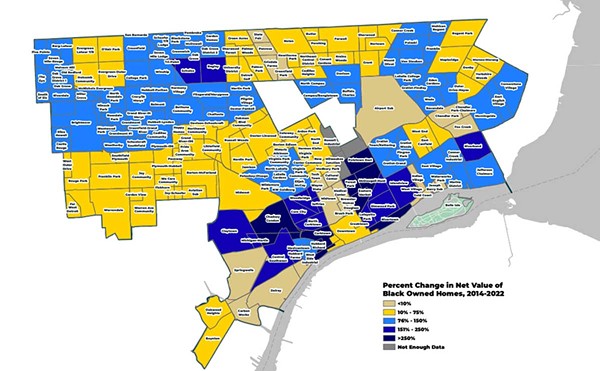The least expensive way to keep water clean is to let Mother Nature do the work.
That is the resounding lesson from the Rouge River cleanup, where the most pavement-covered communities are paying the highest price to prevent flooding and contamination, while those with intact wetlands and stream banks are spending less for greater pollution-fighting effect.
The city of Dearborn, for instance, is now building a giant underground storage pipe at a cost of $350 million to hold and slow storm water because it no longer has any open land areas large enough to do it above ground.
In contrast, Salem Township, upstream in Washtenaw County at the headwaters of the Rouge, spent only a few thousand dollars evaluating and approving safeguards for wetlands and streams that hydrologists say will do more to clean and slow storm water.
And across the Rouge watershed local governments have signed voluntary permits with the state to develop storm water management plans, educate the public about pollution prevention, and eliminate illegal sewage hookups to storm water pipes.
Take a bird's-eye view of the specific areas discussed below (the map will open in a new browser window, to which you can refer as you read along).
1) Critical repairs: Restoring urbanized stream banks so that they function as nature intended is a must for holding back pollution and preventing erosion, which dumps tons of soil into rivers.
2) Land use standards: More than a dozen Rouge watershed communities have enacted new ordinances to control lawn fertilizers and other nutrients that ruin water quality by encouraging algae and weed growth. Wayne and Washtenaw counties have addressed contamination from septic systems by requiring inspections and repairs as homes are sold.
3) Water-smart design: Northville Hills in Northville Township is a working model of how to build nature into development projects to slow and clean storm water. Canton Township requires water-smart innovations and collects $300 per lot for storm-sewer maintenance.
4) Getting on the map: Taking stock of local natural resources is the first step toward guiding development around such valuable assets as wetlands, which act like kidneys to store and clean water.
5) Back to life: Newburgh Lake in Livonia is again a popular recreation spot after a $12.6 million cleanup that involved removing PCB-contaminated sediments and restoring fish habitat.
6) Dirty deluge: Out of 157 “combined sewer overflow” outfalls in the Rouge watershed, the cleanup project has fixed 76. Phase II will target the remaining 81 outfalls, which regularly pour millions of gallons of sewage-filled storm water into the river. High-priced fixes include new storm water detention basins and separation of sewer and storm water pipes.
7) Heavy-duty plumbing: The Detroit Water and Sewerage plant, which serves 4.3 million customers in 126 communities, has invested $1.74 billion since 1977 on facility improvements. Costs for further modernization of piping and sewage treatment capacity in the seven-county Detroit region over the next 25 years could reach an estimated $52 billion.
8) Water watch: Across the watershed, technicians regularly take samples to monitor the water’s condition and the project’s progress. Citizen groups, such as Friends of the Rouge, hold regular cleanup days and keep watch over the river.
Map: Copyright MLUI/Gail Dennis. Source: Wayne County Rouge River National Wet Weather Demonstration Project.
E-mail [email protected]





